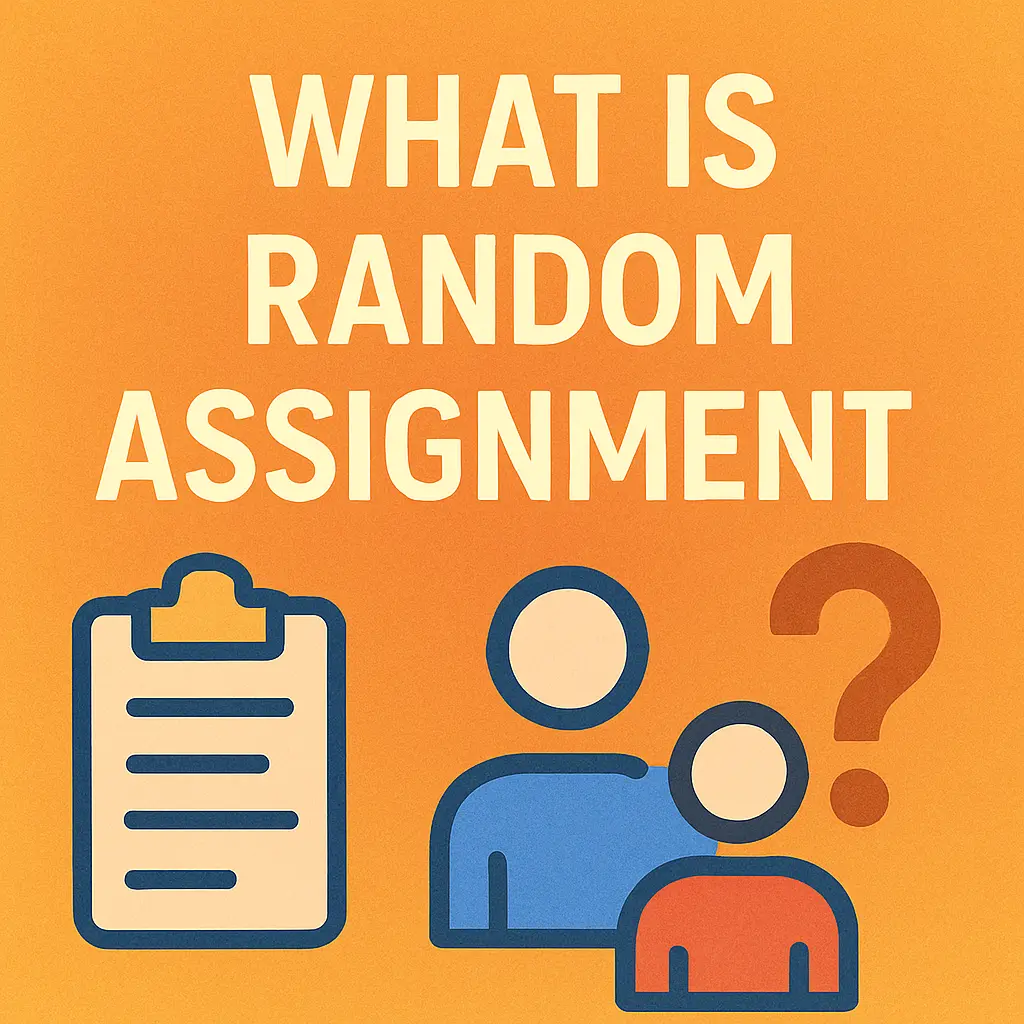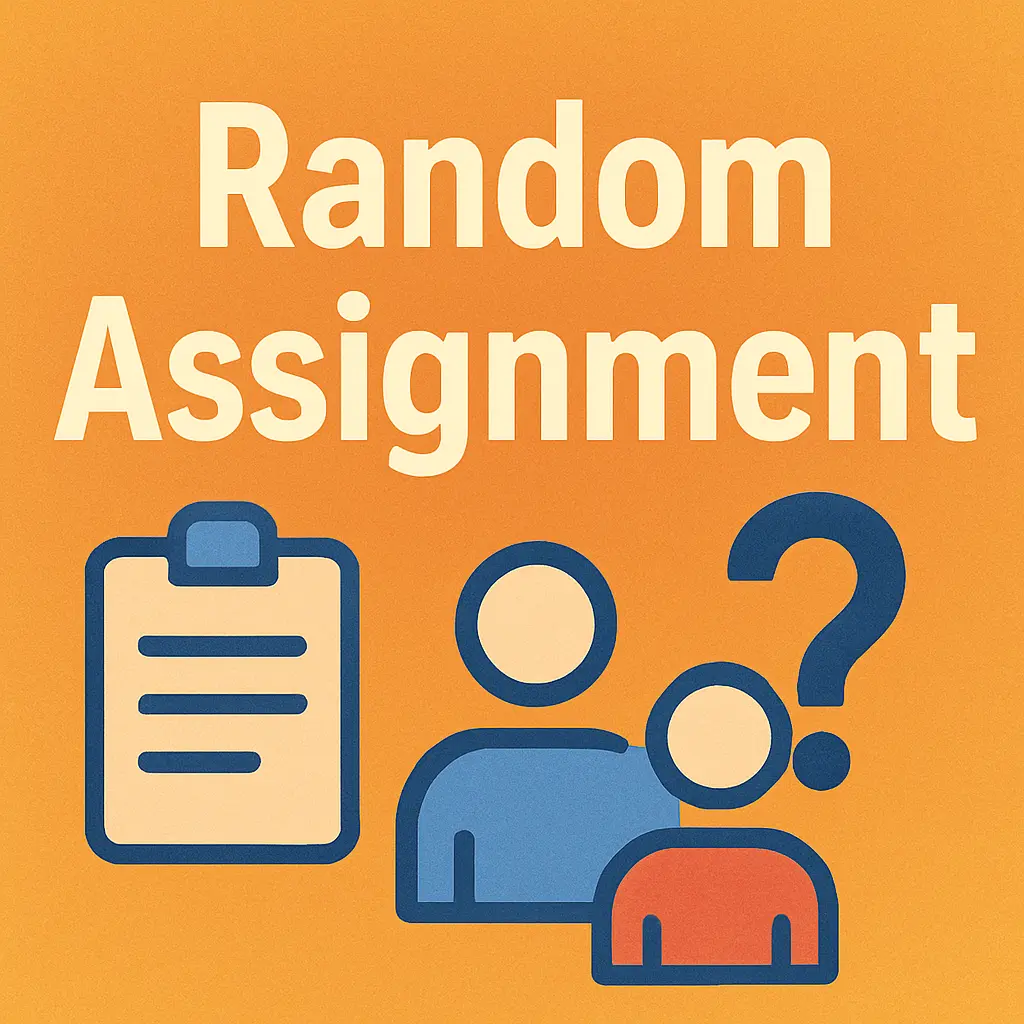What Is Random Assignment?
Random assignment sit contributors into groups randomly during tests. This gives everyone a fair chance to be in any group. It reduces selection bias and makes the study more valid.
- Ensures fairness in-group assignments.
- Minimizes researcher bias.
- Increase the reliability of the results.
- Essential for cause-and-effect conclusions.
- Widely used in clinical and social research.
Random assignment differs from random sampling, which is about selecting participants. Assignment is about distributing them within a study.
What Is a Random Assignment in Simple Terms?
In simple terms, random assignment means choosing group members by chance. Imagine drawing names from a hat no favoritism just pure luck.

- Used in experiments to create fair test groups.
- Ensures outcomes are not influencing by initial differences.
- Simplifies comparisons between the test and control groups.
- Reduces potential study errors.
- Works best in controlled environments.
This procedure helps clearer conclusions because it evenly distributes variables.
What Is Random Assignment in Psychology?
It is key in clinical trials and behavioural experiments.
- Helps to control participant-related factors.
- Used in studies testing mental health interventions.
- Ensures that psychological studies meet ethical standards.
- Provides a strong foundation for reliable data.
- Allows researchers to isolate treatment effects.
Psychologists use it to spot real changes in behaviour caused by the study variables.
What Is the Primary Purpose of Random Assignment?
The primary purpose of random assignment is to cut astonishing variables. It makes sure that just the treatment or condition influences the outcome.
- Create comparable groups.
- Enhances internal validity.
- Reduces systematic errors.
- Ensures fair conclusions.
- Supports replicable research.
Without random assignment the study might wrongly connect outcomes. To treatments instead of uncontrolled variables.
What Is Random Assignment in Research?
In research, random assignment forms the backbone of true experimental design. It’s used across medical, psychological, educational and social sciences.
- Facilitates fair hypothesis testing.
- Avoid group selection bias.
- Supports double-blind study designs.
- Ensures reliable statistical analysis.
- Encourages confidence in the results.
Researchers often pair random assignment with control groups to test new theories.
What Is Random Assignment Example?
Let us say a researcher wants to test a new teaching method. They randomly put students into two groups. One group utilizes the modern technique while the other group utilize the traditional techniques.

- Researchers selected both groups from the same population.
- Assignment done using software or random number tables.
- Ensures students do not differ significantly at the start.
- The teaching method accounts for the differences in results.
- Enhances experimental credibility.
This basic structure shows how unbiased testing leads to better decisions.
What Is Random Sampling and Random Assignment?
Random sampling means choosing participants from a population. Random assignment requires placing those members into groups.
- Random sampling = who participates
- Random assignment = which group they join
- Both help to reduce bias.
- Improve generalisability and internal validity.
- Work together in rigorous experimental research.
Both are vital but serve different roles in the research process.
Why Is Random Assignment Important?
Random assignment is key. It removes selection bias. This means that any differences between groups result from the treatment. Not from the participants’ traits.
- Improves the accuracy of the results.
- Reduces confounding factors.
- Ensuring ethical study practices.
- Validates cause-and-effect claims.
- Supports peer-reviewed research standards.
It is a foundational technique in building scientific evidence.
What Is Assignment Arbitrage?
Assignment arbitrage, although unconnected to research, refers to a financial strategy. It involves exploiting pricing inefficiencies during options assignments in trading.
- Common in options trading.
- Involves calls and puts being exercised.
- Traders gain from differences in stock prices.
- Considered a low-risk, short-term opportunity.
- Requires a deep market understanding.
Researchers see it as unrelated to scientific random assignment. Even if the names are similar.
What Is Assignment of Benefits?
The assignment of benefits (AOB) occurs in healthcare. It permits providers to bill the insurance company for services directly. Meaning patients do not need to pay in advance.
- Common in medical and dental billing.
- Speeds up claim processing.
- Reduces patients’ financial burdens.
- At times, individuals misuse it in insurance fraud.
- Requires patient consent.
It’s a practical financial term not tied to experimental research.
What Is Random Assignment Quizlet?
On platforms like Quizlet, random assignment means putting participants into groups by chance. This helps keep things fair and goal-oriented.

- Popular flashcard-based study tools.
- Provides definitions and examples.
- Useful for psychology and research students.
- Reinforces test preparation.
- Accessible via app or web.
It is a simple way for learners to understand and memorise concepts.
Conclusion
Random assignment plays a vital role in experimental research. It promotes fairness, boosts study reliability and cuts bias. This helps scientists make accurate conclusions. Strong design and analysis create a foundation for reliable scientific knowledge.
FAQs About Random Assignment
Q: Is random assignment always possible?
A: No. It’s mostly used in controlled experiments not observational studies.
Q: Does random assignment guarantee group equality?
A: It increases the chance of equality but does not guarantee it.
Q: Why is random assignment critical in psychology?
A: It ensures that outcomes are due to treatment not participant differences.
Q: Can computer software assist in random assignment?
A: Yes, tools like SPSS or Excel can automate the process.

